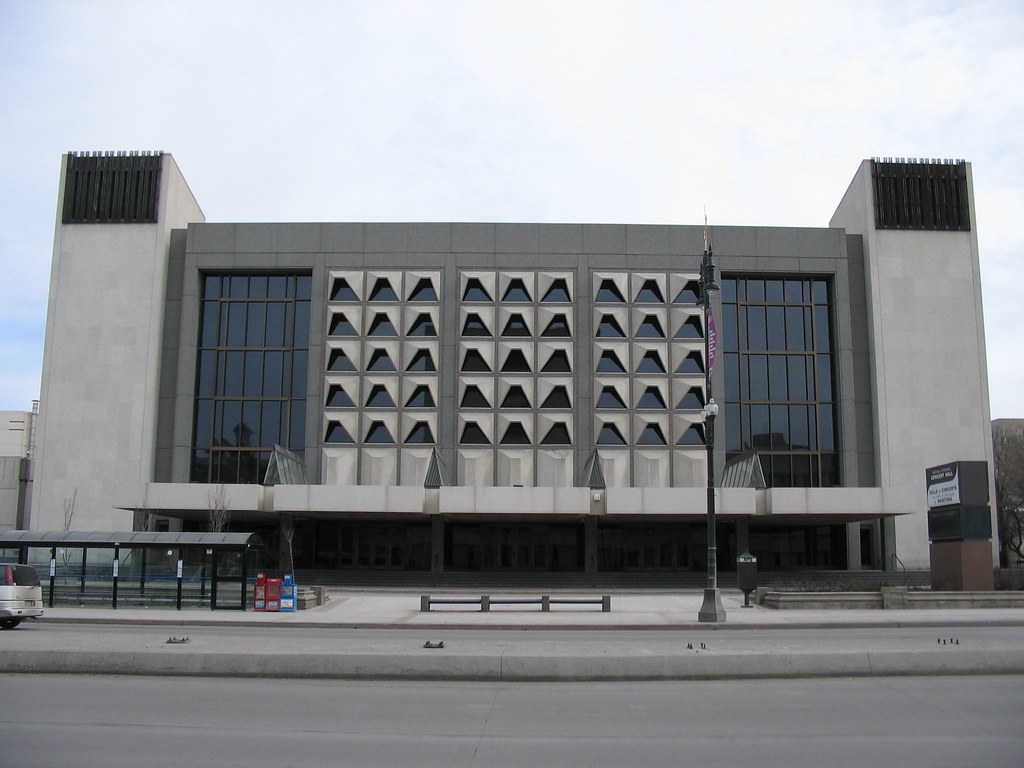Browse "Arts & Culture"
-
Article
Maisie Hurley
Maisie Hurley, née Maisie Amy Campbell-Johnston, Vancouver-area political activist, Indigenous ally (see Indigenous Peoples in Canada), newspaper founder and art collector (born 27 November 1887 in Swansea, Wales; died 3 October 1964 in North Vancouver, British Columbia). Although Hurley had no formal legal training or law degree (see Legal Education), she worked on several legal cases and advocated for Indigenous peoples’ basic human rights as well as for changes to the Indian Act. In 1946, Hurley started a newspaper called The Native Voice that aimed to bring attention to important issues concerning Indigenous communities across Canada (see Rights of Indigenous Peoples in Canada). In 2011, Hurley’s collection of Indigenous art was displayed at the North Vancouver Museum.
"https://d2ttikhf7xbzbs.cloudfront.net/Untitled-11.jpg" // resources/views/front/categories/view.blade.php
https://d2ttikhf7xbzbs.cloudfront.net/Untitled-11.jpg
-
Article
Centennial Concert Hall
The Centennial Concert Hall is a performing arts centre located on Main Street in Winnipeg, Manitoba. It opened in in 1968 and is owned by the province and operated by the Manitoba Centennial Centre Corporation.
"https://d2ttikhf7xbzbs.cloudfront.net/centennialconcerthall/centennialconcerthall.jpg" // resources/views/front/categories/view.blade.php
https://d2ttikhf7xbzbs.cloudfront.net/centennialconcerthall/centennialconcerthall.jpg
-
Article
Music at Maple Leaf Gardens
Maple Leaf Gardens. Downtown Toronto arena, home of the famed Maple Leaf hockey team and venue for other sports and entertainment activities. Designed by Ross & Macdonald with associates Jack Ryrie and Mackenzie Waters, it was built in 1931 at a cost of about $1.5 million on the northwest corner of Carlton and Church streets.
"https://d2ttikhf7xbzbs.cloudfront.net/media/media/49ad081c-8dc7-4f26-b772-628408048e22.jpg" // resources/views/front/categories/view.blade.php
https://d2ttikhf7xbzbs.cloudfront.net/media/media/49ad081c-8dc7-4f26-b772-628408048e22.jpg
-
Article
Massey Hall
Known as “Canada’s Carnegie Hall,” Massey Hall is Canada’s oldest and most venerated concert hall. It opened in 1894 and was the home of the Toronto Symphony Orchestra and the Toronto Mendelssohn Choir until 1982. The site of many historic events and performances, it has been repeatedly voted Canada’s best live music venue over 1,500 seats and venue of the year by Canadian music industry associations. It is a National Historic Site and a heritage site in the City of Toronto. It was closed between 2 July 2018 and 24 November 2021 to allow for a $184-million renovation.
"https://d2ttikhf7xbzbs.cloudfront.net/media/media/ecd2d12a-f99b-4129-b278-e7cd6edb3318.jpg" // resources/views/front/categories/view.blade.php
https://d2ttikhf7xbzbs.cloudfront.net/media/media/ecd2d12a-f99b-4129-b278-e7cd6edb3318.jpg
-
Article
McCord Stewart Museum
The McCord Stewart Museum is one of the few museums in Canada dedicated to the study of social history. Initially opened as the McCord National Museum in 1921, it closed to the public during the Great Depression. It reopened in McGill University’s old Student Union Building in downtown Montreal in 1971. It merged with the Stewart Museum in 2013 and absorbed the Fashion Museum in 2018. The McCord Stewart Museum was originally created to house the extensive collection of Canadiana amassed by David Ross McCord. The museum holds an estimated 2.1 million items, including objects, images and manuscripts.
"https://d2ttikhf7xbzbs.cloudfront.net/1024px-Musee_McCord_Montreal_4036379706.jpg" // resources/views/front/categories/view.blade.php
https://d2ttikhf7xbzbs.cloudfront.net/1024px-Musee_McCord_Montreal_4036379706.jpg
-
Article
Music in Medicine Hat
City of almost 43,000 on the South Saskatchewan River in Southern Alberta. With the arrival of the CPR in 1883, the city became the major commercial centre of the area.
"https://development.thecanadianencyclopedia.ca/images/tce_placeholder.jpg?v=e9dca980c9bdb3aa11e832e7ea94f5d9" // resources/views/front/categories/view.blade.php
https://development.thecanadianencyclopedia.ca/images/tce_placeholder.jpg?v=e9dca980c9bdb3aa11e832e7ea94f5d9
-
Article
Mermaid Theatre of Nova Scotia
the mixed-up chameleon from The Very Hungry Caterpillar & Other Eric Carle Favourites (photo by Margo Ellen Gesser, courtesy Mermaid Theatre of Nova Scotia). Mermaid Theatre of Nova Scotia The Mermaid Theatre of Nova Scotia was established in Wolfville, NS, in 1972 (after a 1971 summer trial funded through the Opportunities for Youth programme) by Evelyn Garbary, advisor, Tom Miller, artistic director, and Sara Lee Lewis, business manager, to bring live puppet drama to young...
"https://d2ttikhf7xbzbs.cloudfront.net/media/media/750a698a-7677-4bb4-ab9b-0835ce06c0d9.jpg" // resources/views/front/categories/view.blade.php
https://d2ttikhf7xbzbs.cloudfront.net/media/media/750a698a-7677-4bb4-ab9b-0835ce06c0d9.jpg
-
Article
Music in Moncton
New Brunswick city originally known as LeCoude and first settled in 1750 by Acadians. The Acadians were dispersed in 1758 but returned in sufficient numbers to constitute a fundamental segment of the Moncton community.
"https://development.thecanadianencyclopedia.ca/images/tce_placeholder.jpg?v=e9dca980c9bdb3aa11e832e7ea94f5d9" // resources/views/front/categories/view.blade.php
https://development.thecanadianencyclopedia.ca/images/tce_placeholder.jpg?v=e9dca980c9bdb3aa11e832e7ea94f5d9
-
Article
Music in Montréal
Montreal, Quebec is a city located on the island of the same name at the junction of the St Lawrence and Ottawa rivers in the province of Québec. The island is one of a cluster that also includes Ile Jésus (which became part of the city of Laval in 1965) and the islands of Bizard and Perrot.
"https://d2ttikhf7xbzbs.cloudfront.net/media/media/f52cf68e-cd7e-42d0-8a11-37f6b80ec967.jpg" // resources/views/front/categories/view.blade.php
https://d2ttikhf7xbzbs.cloudfront.net/media/media/f52cf68e-cd7e-42d0-8a11-37f6b80ec967.jpg
-
Article
Music at Mount Allison University
Mount Allison Ladies' College instituted a music program at its inception. In 1874 its first certificates in music, both in piano, were awarded to Ravinia Stewart and Alma Hickman.
"https://d2ttikhf7xbzbs.cloudfront.net/media/media/5e608cc7-1a54-41d1-b9ca-9b40604eaefe.jpg" // resources/views/front/categories/view.blade.php
https://d2ttikhf7xbzbs.cloudfront.net/media/media/5e608cc7-1a54-41d1-b9ca-9b40604eaefe.jpg
-
Article
Music at Acadia University
Acadia University. Non-denominational, predominantly undergraduate institution in Wolfville, NS, with some graduate programs at the master's level (not in music).
"https://development.thecanadianencyclopedia.ca/images/tce_placeholder.jpg?v=e9dca980c9bdb3aa11e832e7ea94f5d9" // resources/views/front/categories/view.blade.php
https://development.thecanadianencyclopedia.ca/images/tce_placeholder.jpg?v=e9dca980c9bdb3aa11e832e7ea94f5d9
-
Article
Music at Bishop's University
Bishop's University. Founded in 1843 in Lennoxville, near Sherbrooke, Que, by George Jehoshaphat Mountain, the third Anglican bishop of Quebec, as a liberal arts college. Its foundation was ratified by an act of the Quebec Legislative Assembly.
"https://development.thecanadianencyclopedia.ca/images/tce_placeholder.jpg?v=e9dca980c9bdb3aa11e832e7ea94f5d9" // resources/views/front/categories/view.blade.php
https://development.thecanadianencyclopedia.ca/images/tce_placeholder.jpg?v=e9dca980c9bdb3aa11e832e7ea94f5d9
-
Article
Music at Brandon University
When the Dept of Music was founded in 1906, it offered only conservatory-type instruction under the direction of Abbie Helmer Vining (1906-7). W.L. Wright, afterfour years' study in Berlin with Leopold Godowsky, took over in 1907 and remained director until 1947.
"https://d2ttikhf7xbzbs.cloudfront.net/media/media/4112eb2b-9753-45c6-b355-904d9a519a46.jpg" // resources/views/front/categories/view.blade.php
https://d2ttikhf7xbzbs.cloudfront.net/media/media/4112eb2b-9753-45c6-b355-904d9a519a46.jpg
-
Article
Music at Brock University
Brock University. Non-denominational university founded in St Catharines, Ont, in 1964 with undergraduate and graduate programs in arts, sciences, education, and administration.
"https://development.thecanadianencyclopedia.ca/images/tce_placeholder.jpg?v=e9dca980c9bdb3aa11e832e7ea94f5d9" // resources/views/front/categories/view.blade.php
https://development.thecanadianencyclopedia.ca/images/tce_placeholder.jpg?v=e9dca980c9bdb3aa11e832e7ea94f5d9
-
Article
Music at Canadian Mennonite Bible College
Canadian Mennonite Bible College (Canadian Mennonite University beginning 1998). School of theology, liberal arts, and music, founded in 1947 in Winnipeg by the Conference of Mennonites in Canada.
"https://development.thecanadianencyclopedia.ca/images/tce_placeholder.jpg?v=e9dca980c9bdb3aa11e832e7ea94f5d9" // resources/views/front/categories/view.blade.php
https://development.thecanadianencyclopedia.ca/images/tce_placeholder.jpg?v=e9dca980c9bdb3aa11e832e7ea94f5d9
